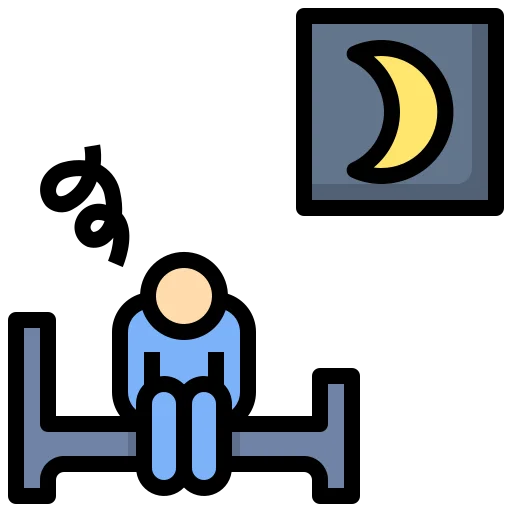
In October 2023, the European Academy of Dermatology and Venereology (EADV) held their yearly congress, bringing together more than 15,000 healthcare professionals (HCPs) over 4 days in Berlin, Germany. This annual event attracts HCPs, organisations, and industry from around the world to present the latest scientific advances and developments. Some key themes covered this year included big data, emerging drugs and technologies, psychodermatology, dermatology in skin of colour, adverse events in anti-cancer therapy and many other areas of interest.
Margarita Svarceva and Adele Carrot from Sector & Segment attended the congress to meet with fellow industry participants and discuss latest trends and insights in the dermocosmetic market.

Among the numerous advancements being presented, Sector & Segment noticed an emphasis on taking a holistic approach for patients with dermatological conditions. The latest conversations and advancements featured at the conference put the patient at the centre of decision-making, taking into account their mental health and quality of life. For a long time, dermatology focused on the condition itself only, but now we are discovering that skin conditions are affecting patients in many different ways, from hindered social lives, to difficulties at work, to challenges in getting adequate rest. On top of that, patients are dealing with the natural effects of their condition which could involve symptoms like itching or swelling, as well as a variety of side effects
Consequently, HCPs are expanding their understanding of skin disease beyond symptoms to include its broader impact on quality of life. And in addition to that they are looking to dermatological companies to drive innovation through clinical trials and develop new approaches which are more supportive to patients and less likely to cause side effects.
It is widely known that any conditions with physical symptoms can affect quality of life and can dampen patient confidence. However, research findings at EADV showcased that the effects of skin disease have a much greater impact than previously thought, in both personal and social settings.

Firstly, the stigma associated with patients who exhibit facial skin symptoms is far more negative than previously thought1. By tracking the eye gaze of 245 participants as they looked at photographs of different people with or without acne, researchers observed that individuals with acne are perceived as less attractive, trustworthy, confident, successful, dominant and happy. On top of this, the level of stigma associated with acne increases for female patients over male patients, resulting in a stronger negative experience in social settings.

Skin conditions also cause a significant disruption to sleep2. In a study of 50,000 adults across 20 countries it was observed that half the patients with a skin disease experience sleep disturbance, which then results in lower productivity at work and less willingness to engage in social activities. The main symptoms which cause the disturbances were itching and a burning sensation on the skin.

Patients with skin conditions often experience anxiety and stress which isn’t properly addressed. As an example, Alopecia patients are thought to deal with their condition by hiding the hair loss under a wig. However, research has identified that emotional support is a large unmet need3, and that patients would benefit from talking to an HCP or councillor to discuss their condition, calm their anxiety and understand how to adjust their daily life.
Thanks to these kinds of research, Dermatologists are developing a broader understanding of skin disease, focusing not only on the key symptoms, but also broader implications for the patient’s quality of life.
As we learn about the broader patient implications and challenges, HCPs are looking to make treatment more sustainable for patients. When using traditional medications, patients struggle not only with disease symptoms, but also face significant side effects from treatments. HCPs hope that limiting these side effects will go a long way towards lessening the disease burden and improving patients’ quality of life.
One such example is the topical or oral antibiotics used as the first line treatment for acne. These treatments can promote a patient’s resistance to antibiotics which will complicate other treatments, and particularly any surgeries, needed in the future. Similarly, topical corticosteroids are the top treatment for atopic dermatitis, even though their prolonged use can cause skin atrophy, hypopigmentation, hyperpigmentation, allergy, telangiectasia (dilation of small blood vessels leading to spider-like veins visible on the skin), as well as, surprisingly, the worsening of atopic dermatitis. Despite this, these are still the go-to treatment because they are reimbursed by payers.
Despite challenges with access to new treatments or their lack of reimbursement, HCPs are looking forward. At the EADV 2023, Dermatologists spoke about various alternatives they are exploring. There is hope that as a vast amount of clinical evidence and data on quality of life is being generated, that these treatments will become reimbursed in the near future.
Biologics have been emerging as a treatment for psoriasis and atopic dermatitis. These drugs are derived from living cells or organisms, and they target specific components of the immune system or inflammatory pathways. As a more specific treatment, biologics have a more patient-centred approach, as they can be personalised and be tailored to the individual’s specific disease profile leading to better outcomes. Recent clinical trials provide promising data on the use of biologics in conjunctions with other treatments, particularly as severe psoriasis patients are 22% more likely to develop cancer where both biologics and chemotherapy may be needed4.
The use of new options such as Benzyol Peroxide or Retinoids is being explored for acne instead of antibiotics or corticosteroids. These options provide a high level of antibacterial and anti-inflammatory effects on patients and can serve as a longer-term treatment because resistance is less of a concern. Patients show generally high tolerance with a decreased level of side effects. However, these are usually not reimbursed.
Gazing into the future, Dermatologists are also looking at using bacteriophages (viruses that infect and replicate only in bacterial cells) to treat specific types of skin diseases. Such treatments would also require HCPs to look at the patient more holistically and consider additions such as probiotics to the prescription, which could support the treatment process.
At this stage, most alternative treatments still lack clinical evidence for reimbursement, but both HCPs and the industry are working together to generate data and increase awareness on the positive impact to patients. Dermocosmetic and pharmaceutical companies are highly involved and listening to the needs of HCPs in testing and exploring alternative treatment. Various companies took the opportunity of presenting their recent research findings at the EADV.
In our work, Sector & Segment regularly observes the trends discussed at the EADV 2023 congress and we have worked with our clients to improve awareness and help HCPs and patients take a more holistic view. Patients are becoming more complex and HCPs are learning to expand the reach of their treatment further than only their own specialty. 1 in 3 adults globally, are living with more than one chronic condition5 which requires HCPs to consider adjunct treatments and quality of life considerations, when determining the treatment plan. Cardiovascular disease, Cancer and Diabetes are amongst the top conditions with a growing prevalence, and they all see skin-related side effects which can impact a patient’s treatment or daily life. For example, 40% of Diabetes patients experience Xerosis, which is often seen as an unimportant symptom. However, Xerosis can worsen, breaking the skin barrier and resulting in infection. Depending on where this is on the body, the infection could reach the bone or could develop into an ulcer which requires immediate attention. At this stage, patients can be too embarrassed to leave their home and socialise, if these infections or ulcers are visible or cause pain. Higher awareness and attention on behalf of the patients early on, driven by encouragement from their HCPs, could reduce the number of dermatological complications these patients experience.
Additional treatments which look at the patient holistically and support their nutrition, mental health, or other comorbidities are rising as there is evidence showing improved outcomes from the main treatment when taking this approach. Patients with various types of cancer who are undergoing chemotherapy or radiotherapy experience a variety of symptoms including weight loss, malnutrition, fatigue, taste alterations and dry skin. While the dry skin or even malnutrition are not seen by patients as a priority, with most focusing on getting rid of the tumour, research has shown that engaging in “supportive” care such as nutrition or skincare can lift energy levels, increase confidence, decrease anxiety and improve treatment outcomes overall, the end-goal. Cancer patients are often understandably overwhelmed with the amount of information they receive around diagnosis, and HCPs are focused on defining the therapeutic plan, hence these supportive, but important, care is often not discussed soon enough.
We were excited to attend the EADV 2023 in Berlin, to discuss our views and hypotheses with key opinion leaders and the industry. We enjoyed being able to catch up with clients, as well as network with such a diverse range of companies from all across Europe. Our discussions were very rewarding, and we particularly enjoyed the clinical updates in the area of dermocosmetics and pharmaceuticals in this very promising field. We hope to see you at EADV 2024!
Article disclaimer from Sector & Segment:
We collect, use, analyse and share data such as statistical or marketplace data and provide information such as opinions and insights for general information purposes only. The content of this article is not intended to amount to advice of any kind. No reliance should be placed on any statements made in this article, whether for medical, health, legal purposes or otherwise. Nothing in this article is an offer to enter into a binding contract or a recommendation, endorsement, guarantee or warranty of any kind. The content of this article is aimed at industry institutional professionals and is intended to serve as a concise initial reference and not as a complete reference source. You must obtain medical, professional or specialist advice before taking, or refraining from, any action on the basis of the content in this article.
You acknowledge that the content of this article may contain inaccuracies or errors and we expressly exclude liability for any such inaccuracies, incompleteness or errors to the fullest extent permitted by law. Neither we nor any third parties provide any warranty or guarantee as to the accuracy, timeliness, performance, completeness, or suitability of the information herein for any particular purpose. Some information may contain links to other sites, resources, or opinions of third parties and are provided for your information only. We have no control over the contents of those sites or resources and are not responsible for the content. In no event shall we be responsible for any loss or damage of whatever kind (including negligence) arising out of or in connection with your use of or reliance on any content within this article. You agree that your use of this content is at your own risk. This does not affect claims in respect of death or personal injury caused by our negligence and or excludes or limits liability that cannot be limited under law.
Hajat and Stein: The global burden of multiple chronic conditions: A narrative review (2018): https://www.ncbi.nlm.nih.gov/pmc/articles/PMC6214883/